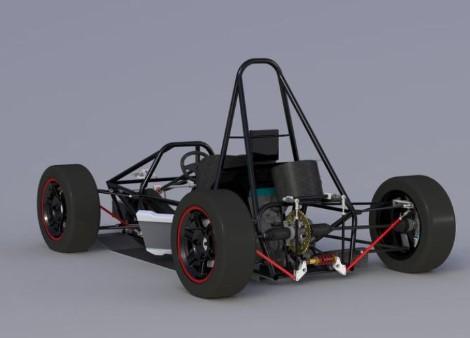How Racing Kart Chassis Function As Suspension Systems Without Springs

In the world of motorsports, karts are often seen as simple machines, but the engineering behind them is highly sophisticated. A racing kart chassis plays a pivotal role in ensuring performance, handling, and safety. Unlike traditional vehicles, karts do not rely on springs or conventional suspension systems. Instead, the chassis itself is designed to flex and absorb forces, allowing the kart to maintain grip and stability on the track. Understanding how these chassis function as suspension systems is essential for both drivers and mechanics who aim to optimise performance.
The Basics of Kart Chassis Flex
Kart chassis are typically constructed from tubular steel, which provides a combination of strength and flexibility. The steel’s inherent properties allow the frame to bend slightly under stress, absorbing shocks from bumps, curbs, and track irregularities. This controlled flex acts as a pseudo-suspension, maintaining tyre contact with the racing surface and ensuring predictable handling.
The design of the chassis, including tube diameter, wall thickness, and overall geometry, determines how much flex occurs. Manufacturers carefully engineer these factors to balance rigidity and compliance, ensuring that the kart responds effectively to driver input while adapting to track conditions.
Weight Distribution and Chassis Dynamics
A key factor in how the chassis functions is weight distribution. Drivers shift their weight during cornering, accelerating, and braking, which interacts with the frame’s flex characteristics. The chassis must be able to respond to these dynamic forces to maintain stability.
By understanding how the chassis flexes, drivers can adjust their driving style to exploit this natural suspension system. Properly balanced karts provide improved traction, reduced tyre wear, and more consistent lap times.
Materials and Construction Techniques
The choice of materials significantly impacts chassis performance. High-quality steel and precision welding techniques ensure that the frame can endure repeated stress without deforming permanently. Some high-end karts also use chromoly steel for enhanced strength-to-weight ratio.
Additionally, the geometry of the chassis—such as the positioning of front and rear torsion bars—affects how forces are distributed. Fine-tuning these elements allows teams to tailor handling characteristics for different track layouts, weather conditions, and driver preferences.
Interaction with Tyres and Track Surface
Without traditional suspension components, tyres play an integral role in absorbing shocks. The flex of the racing kart chassis works in conjunction with the tyres to smooth out irregularities in the track surface. Softer tyres can complement a stiffer chassis, while harder tyres may be paired with a more flexible frame, depending on desired handling traits.
This synergy between tyres and chassis ensures that the kart maintains maximum contact with the track, optimising grip and reducing the risk of sliding or losing control.
Adjustability and Tuning
Modern kart chassis are highly adjustable. Drivers and mechanics can modify ride height, axle positioning, and chassis stiffness to suit specific track conditions. Adjustments to the chassis allow teams to fine-tune how the frame flexes, effectively changing how the pseudo-suspension behaves.
Access to quality UK kart parts enables racers to maintain and upgrade their chassis, ensuring consistent performance and longevity. Components such as torsion bars, bushings, and reinforcing plates are vital for tailoring the kart to individual driving styles and track demands.
Performance Benefits
The absence of traditional suspension systems offers several advantages. A lighter chassis improves acceleration, braking, and cornering agility. Additionally, the simplicity of a springless design reduces maintenance requirements and mechanical complexity, allowing teams to focus on driving and strategy rather than continual suspension repairs.
Despite the lack of conventional suspension, a well-designed chassis provides predictable handling and excellent feedback to the driver, which is essential in competitive racing.
Safety Considerations
Flexing chassis not only enhances performance but also contributes to safety. By absorbing some of the forces generated during impact or over uneven surfaces, the frame reduces the stress transferred to the driver. Combined with proper helmet and protective gear, this system helps mitigate injury risks during high-speed karting.
Evolution and Innovation
Over the years, kart chassis design has evolved significantly. Engineers continue to explore new materials, tube geometries, and construction techniques to optimize flex and improve handling characteristics. Research and development in this field ensure that modern racing karts remain highly competitive and responsive, even without springs or shock absorbers.
Conclusion
The unique design of a racing kart chassis allows it to function as a suspension system, providing flexibility, grip, and control without relying on traditional springs. Through careful engineering, weight distribution management, and the use of quality UK kart parts, chassis designers have created a system that balances performance, durability, and safety. Understanding this mechanism is crucial for drivers and teams looking to gain a competitive edge on the track.
- Art
- Causes
- Crafts
- Dance
- Drinks
- Film
- Fitness
- Food
- Games
- Gardening
- Health
- Home
- Literature
- Music
- Networking
- Other
- Party
- Religion
- Shopping
- Sports
- Theater
- Wellness


